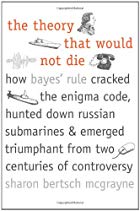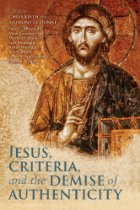Recently anyone would think that I have come out and “attacked” and “abused” Acharya S / D. M. Murdock and others when all I have done is allow some discussion in which I insisted that the standard rules of evidence be foundational for conclusions and said that methods that do not follow such standard rules are unscientific.
I have over the years avoided addressing the works of Acharya S / D. M. Murdock for no reason other than that I have never spent much time reading any of them and have had no personal interest in her perspective on things. From time to time someone supporting her views has commented on this blog and I have never had a problem with that. (What I have objected to is when anyone repeatedly comments in a way that indicates they are regularly attempting to evangelize for some particular belief — mostly these are Christian fundamentalists or mystics of some sort. Once I realize what is going on I usually put a stop to their comments.)
D. M. Murdock herself has posted comments on this blog at least three times:
/2006/11/21/the-jesus-puzzle-did-christianity-begin-with-a-mythical-christ-early-doherty-canadian-humanists-1999-review/#comment-5037 — in response I purchased her book Fingerprints of Christ and have browsed through much of it a few times, but I have not seen anything in it to capture my interest enough to write about. I have no problems with its content. It is okay — nothing new from my perspective, I would not condemn it. There are many basic works on mythicism that have little interest for me mainly because I am so familiar with the sorts of things they say and I have moved on from such things. That’s not to say they would not be of interest to others, of course.
/2012/02/06/earliest-manuscript-of-the-gospel-of-mark-validates-earl-doherty/#comment-23189
and
/2012/06/18/did-they-really-think-like-this/#comment-30983
I have never banned Murdock’s comments. I have several times expressed my outrage over the abusive insults so many others have directed at Murdock/Acharya and have never indulged in such abuse against her myself. Tim has had the same approach — deploring the way many others have spoken of her with contempt. I have twice expressed my own discomfort with Richard Carrier’s insulting language directed not only at Acharya but others, too. I do not agree with his rationales for it and do not engage in his sort of personally insulting language here. I do not agree with some of Carrier’s efforts to shut down discussions through insult. It is important to provide rational and clear responses to irrational and muddled ideas.
I accepted Acharya’s Facebook invitation to be added as a Facebook friend — though I scarcely ever use Facebook at all for quite some time now. My blog posts, someone told me, are linked there, but that’s all. (She has since removed herself from that status.) I have recently a few times had occasion to speak critically of some of her approaches to things where I have felt it appropriate to do so — but that is not personal abuse.
I was recently prepared to engage Robert Tulip and others in discussion about astrotheology, and I was at some pains to reassure him that my initial scepticism had nothing to do with prejudice. For heaven’s sake, I have been through enough to not be embarrassed or prejudiced against about holding a minority viewpoint. But I have also been through enough to know just how easily I can be wrong about so much. So what is so very important to me is understanding how valid logic works, how we know what we do and how we justify the conclusions we draw from our information. I am never content to rely on secondary sources but always want to understand the primary material any knowledge is based upon before committing myself in discussions such as the ones I address here. I have mentioned in my biographical notes elsewhere the point at which I realized what it was going to mean to attempt as far as I could the path of intellectual honesty.
Now Murdock’s supporters are pointing to one period of my past life to paint me as an ongoing cultist in my thought patterns. They have obviously missed the rest of my biographical details in my “About Vridar” page and also in my recent post, “A Little Biographical Footnote“. It is because of lessons I have learned from my past experience in a cult that I can smell certain kinds of fallacious arguments a mile off.
So yes, method of argument is important to me. How we justify the conclusions we draw is important — more so or at least as important as the conclusions themselves.
I do not rely on secondary literature. I use secondary literature to gain access to new ways of understanding our sources, and that’s why my library and reading has become so vast. One book will often lead me to read half a dozen other books. And I will be studying the primary sources, too, and studies made about them. So when Murdock or others say a certain book is “the definitive” or “must read” answer to a question, I generally do not agree. I will read what others have to say about it — scholarly reviews — as well as read carefully what the author has to say, and I will usually find much more qualifications by the author than found among some over-enthusiastic readers.
So it is with disappointment that I find the following remarks now being spread about me on Acharya/Murdock’s discussion board: Continue reading “Falling out”
Like this:
Like Loading...
 I took time out from my own chapter by chapter reviews of the book to read a history of Bayes’ Theorem by Sharon McGrayne, The Theory That Would Not Die. I’d like to return to discussions of Bayes’ rule with that additional reading background. One thing that stands out from reading the way Bayes’ theorem has been successfully applied and the social and political struggles it has had for open acceptance (it has much more often been covertly accepted) until today is that the more complexities and nuances their are impinging upon any question, the more appropriate is the use of Bayes’ theorem to help resolve them. That means that those arguments that history is too complex for Bayes to be of use fail to understand that it is complexity and nuance of so many unknown quantities that Bayes assists us in handling. McGrayne’s book also shows us that some of the arguments used against Bayes today are identical to the ones that were used long ago until they were eventually proven unfounded.
I took time out from my own chapter by chapter reviews of the book to read a history of Bayes’ Theorem by Sharon McGrayne, The Theory That Would Not Die. I’d like to return to discussions of Bayes’ rule with that additional reading background. One thing that stands out from reading the way Bayes’ theorem has been successfully applied and the social and political struggles it has had for open acceptance (it has much more often been covertly accepted) until today is that the more complexities and nuances their are impinging upon any question, the more appropriate is the use of Bayes’ theorem to help resolve them. That means that those arguments that history is too complex for Bayes to be of use fail to understand that it is complexity and nuance of so many unknown quantities that Bayes assists us in handling. McGrayne’s book also shows us that some of the arguments used against Bayes today are identical to the ones that were used long ago until they were eventually proven unfounded.



